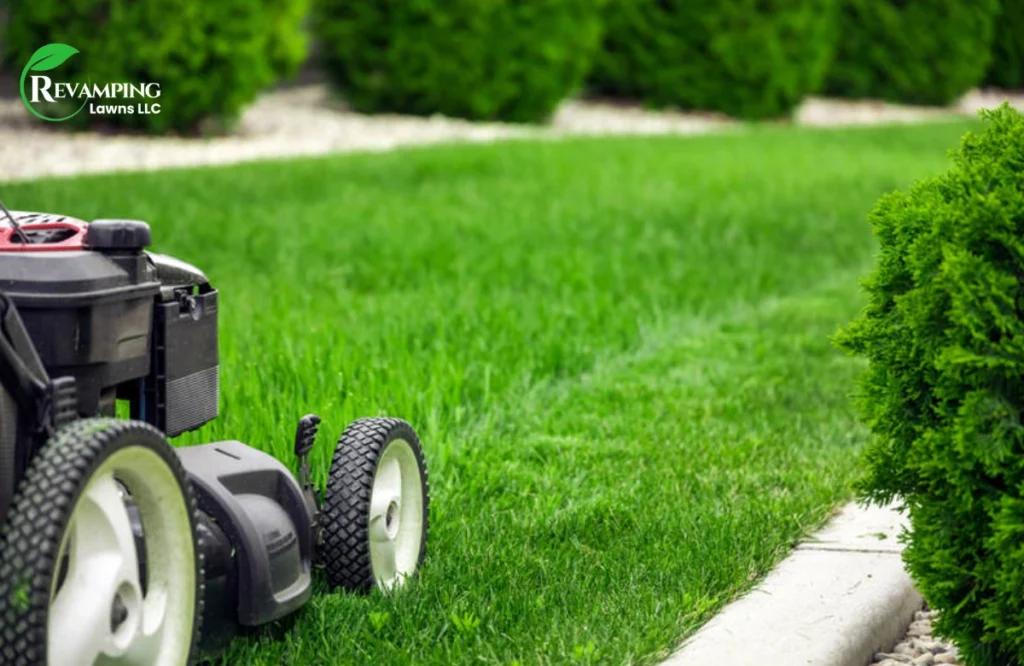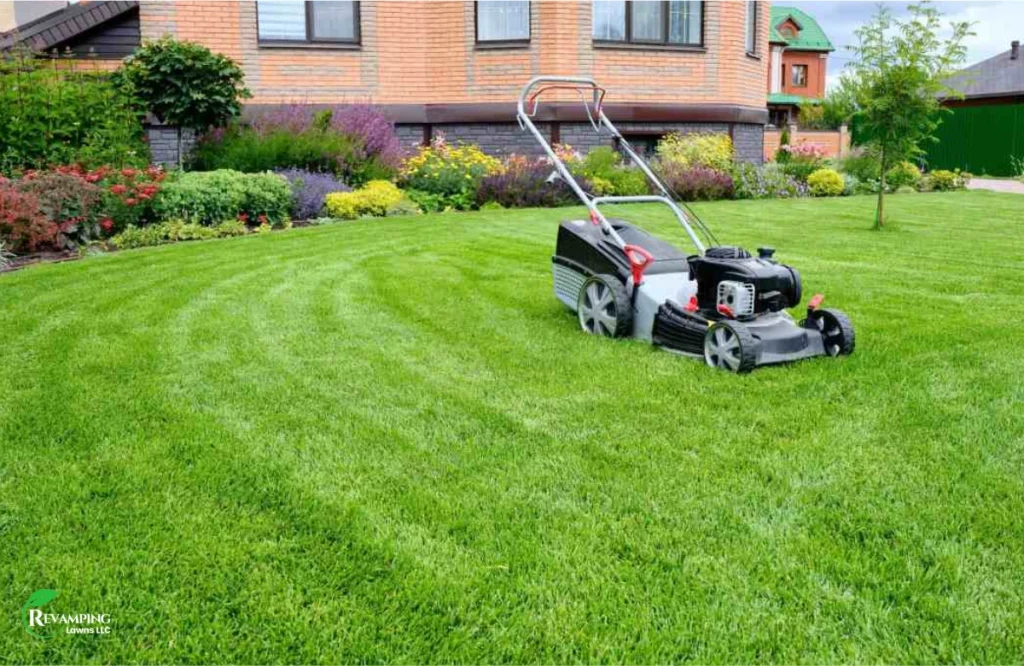Maintaining a healthy lawn in winter can be a real challenge. When the temperature falls and the pace of growth slows, homeowners often make small mistakes that will eventually weaken their lawn rather than strengthen it, thus delaying its recovery in the warmer months. Proper care for winter lawns is essential if you are to protect the grass from cold damage, disease and stress while it lies dormant. This blog will explore some of the most common mistakes of winter lawn care and how you can avoid making these mistakes for a lush green lawn. Why Winter Lawn Care Still Matters
Winter lawn care is important because it keeps your turf strong and healthy, even through the cold months. Although grass grows more slowly or ceases to grow at all by winter, its roots are still alive and need help. Little things like aerating your soil, raking up leaves and applying the right kind of food will give these roots the nourishment and space they need to breathe. Strong roots mean that grass can survive the cold better, resist disease more easily and come back in spring as a bright green lawn. While leaves and snow sitting on a lawn in moist environments can cause grass blades to rot and fungus to appear. On top of that, without treatment during winter, the ground will be compressed by heavy machinery, making it difficult for both roots or water to make their way underground properly.
Common Winter Lawn Care Mistakes
Understanding these common errors and how to avoid them can help keep lawns healthy through the cold months and prepare them for strong growth in spring.
1. Ignoring Lawn Care Altogether
Many homeowners think that since grass growth slows or stops in winter, lawn care is unnecessary. But neglecting it makes the lawn vulnerable to damage from cold, disease and pests. Even in dormancy, grass roots need air and nutrients. Basic care such as raking leaves, avoiding heavy foot traffic to protect the soil, will help prevent damage, which means your lawn can bounce back quickly when warmth returns.
2. Cutting the Grass Too Short Before Winter
Mowing grass too short before winter weakens it by exposing roots to cold and reducing moisture retention. Grass should be kept at around 2.5 inches tall going into winter to provide insulation and protection.. And if you cut too short anyway, then those crowns get frizzled like bacon grease being drooled over bread for lunch: Another thing that happens when we’re careless in this respect.
3. Failing to Clear Leaves and Debris
Failing to Clear Leave and Debris: What could happen? After the fallen leaves, fallen trees and plants retreat into your lawn, they become a moist dark culture plate for mold, fungi, and overwintering insects, accumulating debris that blocks all air and light reaching down through the topsoil into the sod to stifle scalping of grass.

4. Overwatering or Underwatering
Too much watering will cause a spongy frozen surface for any roots below, instead of letting the grass stay alive and well by feeding from beneath its surface. On the other hand, too little watering can make the plant just dry desiccated dust regardless of how risk-prone. Aim to water only during dry spells, roughly providing half an inch every two weeks, depending on weather conditions.
5. Applying Fertilizer at the Wrong Time
The use of high-nitrogen fertilizer as the season is winding down stimulates growth, when grass should be slowing down. This weak growth can be damaged in winter and waste soil nutrients. Low-nitrogen winter fertilizers, with more potassium, also help to toughen up roots for cold weather and resistance against disease. Timing matters; put on winter-specific fertilizer before the grass goes dormant.
6. Ignoring Snow Mold Prevention
Snow mold is a fungus that occurs under wet, matted grass in snow-covered areas and ruins lawns. Preventing it requires clearing leaves and debris, managing thatch buildup and resisting excessive fall fertilizing that encourages weak growth. Keeping your lawn dry and tended during at least the months of October, November, or December before snow arrives will help to lower mold risk.
7. Heavy Traffic on Frozen Grass
Walking or playing on frozen or wet grass compresses the soil and breaks the grass blades. This compacts the soil and reduces air flow to roots, causing some areas of a lawn to be bare and slow to reestablish in spring. Reducing foot traffic on frosty lawns protects grass health and ensures it will bounce back.
8. Skipping Winter Weed Control
Some weeds thrive in cooler weather and can take over if not controlled in fall or early winter. Proper application of herbicides and taking care to keep the lawn healthy go a long way in eliminating winter weed issues before they have a chance to spread when spring arrives.
9. Using Harsh Ice Melts Near the Lawn
Rock salt and other aggressive ice melts ruin grass roots when they draw the moisture out of the soil, drying or killing patches of turf. Safety-first options such as calcium chloride ice melt help safeguard your lawn and manage the ice. Don’t apply salt directly to the grass to help keep it healthy throughout winter.
Best Practices for Winter Lawn Care
Caring for your lawn in the winter is an essential element to maintain a healthy lawn through the cold months and ensure it bounces back strong in spring. Here’s what you can do.
Mow to the Right Height Before Winter
Mow your lawn down to 2 to 3 inches tall before growth slows. This height protects stems by providing insulation and prevents grass from matting down beneath snow, which can lead to disease. Do not mow when the grass is wet, frosty, or snowy and use sharp blades for a healthy cut.
Water Carefully
Even in the winter, your lawn requires moisture. Water thoroughly, but only when the ground isn’t frozen — typically about once every two weeks with a half-inch of water. Do not water ice-covered soil to avoid damage and freezing of water. Because it helps the grass roots remain strong, keeping the soil moist.
Fertilize with Winter-Specific Food
Apply slow-release fertilizer in late fall or early winter, before the soil freezes. Selecting nitrogen-low and potassium-high fertilizers to enhance the strength of roots and cold resistance. This enables your lawn to store nutrients that it will require for its healthy spring growth.

Protect Your Lawn from Traffic
Attempt to avoid walking or driving on the lawn when the grass is frozen or wet, because that compresses soil and can be tough on delicate grass. Put down barriers or mats to preserve important areas where cars will have to drive over the lawn.
Aerate and Overseed in Late Fall
Loosen compacted soil and help air, water and nutrients reach roots by aerating your lawn. Meanwhile, overseed any thin or bare patches with a winter-hardy grass seed. This produces a thicker lawn that naturally resists weeds and then bounces back in spring.
Keep the Lawn Clear of Leaves and Debris
Rake and discard leaves and debris. Excess leaves shade the lawn and can trap moisture, creating a recipe for mold or fungus. The open lawn prevents air from being trapped and maintains grass health during dormancy.
Manage Snow and Ice Carefully
If snow does accumulate, clear it away gently to avoid damage. Don’t put down harsh ice melts, such as rock salt, near your lawn; safe options like calcium chloride won’t damage grass roots but will effectively control the ice.
Conclusion
Proper winter lawn care is important because it keeps your grass healthy and vital through the cold season. The care you give now gives roots an advantage, keeps diseases from setting in, and has your lawn all prepared for spring’s return to an emerald green color. However, following simple winter lawn care steps and avoiding common slip-ups can save both labor and money by preventing damage and unnecessary repairs later on.
If you want to be sure your lawn looks its best all year long, think about professional services. In Revamping Lawns, we specialize in lawn care to keep your grass healthy and vibrant, whatever time of year. Contact us for tips and expert service today.
FAQs
Yes, but only if the ground isn’t frozen! Water thoroughly every two weeks or whenever there’s little rain to keep roots healthy.
Somewhere in mid-September, when the ground gets hard and leaves start turning yellow. Because you don’t want to push around more than a bag of grass clippings when mowing, leaves start falling!
It is best to avoid walking on frozen or wet grass, as those conditions can be very harmful to compacted soil.
Fertilize with a winter fertilizer that’s lower in nitrogen and higher in potassium to strengthen roots and improve cold tolerance
Remove leaves and debris before snow falls and avoid over-fertilizing in late fall. Proper lawn care reduces mold risk.



